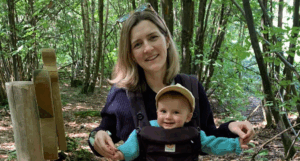Childhood sedentariness causes significant heart damage, raising the risk of heart attack and stroke

Increased sedentary time from childhood causes and worsens excessive heart enlargement, but light physical activity could reduce the risk of premature heart damage.
The new study from the University of Exeter was conducted in collaboration with the University of Bristol and the University of Eastern Finland, and the results were published in the European Journal of Preventive Cardiology.
In total, 1,682 children from the University of Bristol’s Children of the 90s cohort were followed up from age 11 to 24 years old. At baseline, they spent an average of six hours per day in sedentary activities, which increased to nine hours per day by young adulthood. This significant increase in sedentary time contributed 40 percent to the total increase in heart mass from ages 17 to 24 years. The results were similar in children and adolescents with either normal weight or overweight and obesity. Likewise, in children with either normal blood pressure or high blood pressure, sedentariness increased heart mass.
However, an average of three to four hours per day of light physical activity throughout the follow-up decreased the increase in heart mass by 49 percent. Increased light physical activity was also associated with better cardiac function. Examples of light physical activities include: walking, cycling, playing in the playground, gardening, and casual sports.
Professor Andrew Agbaje of the University of Exeter Children’s Health and Exercise Research Center said: “Childhood sedentariness is a ticking time bomb and tackling the problem should be a public health priority. The young population might be at risk of premature heart attack, stroke, and sudden death by their mid-life if the global trend of sedentariness continues unabated – which is only exacerbated by increased screen time. Light physical activity is the only effective antidote against sedentariness and it’s fairly easy to accumulate three to four hours a day.”
Researchers found participating in moderate-to-vigorous physical activity showed signs of slightly increasing the heart size by five percent, which is largely physiologic. Previous studies from the same participants have linked excessive sedentariness to increased inflammation, excessively high insulin, fat obesity, dyslipidaemia, and worsening arterial stiffness. Excessive increase in heart mass and size (left ventricular hypertrophy) is a strong risk factor for heart attacks, stroke, and premature death among adults.
Light physical activity is being shown as a consistent and effective approach to reversing the harmful effects of childhood sedentariness. However, no study in the world has previously examined whether long-term exposure to light physical activity from childhood holds the potential to reverse the increase in cardiac mass. This is because repeated echocardiography assessments of the heart in a large population of healthy youth are rare.
Professor Andrew Agbaje of the University of Exeter said: “There should be a political will at local, national, and global levels to promote light physical activity. We need to act now because the economic and health cost of sedentariness may become unbearable. The World Health Organization’s physical activity guideline will be updated in the future to include light physical activity, but public health experts, health policymakers, health journalists, paediatricians, and parents should encourage kids to participate in daily light physical activity straight away.”
The current study is the largest and the longest follow-up accelerometer-measured movement behaviour and repeated echocardiography study in the world. The participants wore accelerometer devices on their waists at ages 11, 15, and 24 years for four to seven days and had echocardiography measurements of the heart structure and function at ages 17 and 24 years. Their fasting blood samples were also repeatedly measured for low-density lipoprotein cholesterol, high-density lipoprotein cholesterol, triglycerides, glucose, insulin, and high-sensitivity C-reactive protein. Blood pressure, heart rate, smoking status, socio-economic status, family history of cardiovascular disease, as well as dual-energy X-ray absorptiometry measured fat mass and lean mass were accounted for in the analyses.
Professor Agbaje’s research group (urFIT-child) is supported by research grants from Jenny and Antti Wihuri Foundation, the Finnish Cultural Foundation Central Fund, the Finnish Cultural Foundation North Savo Regional Fund, the Orion Research Foundation, the Aarne Koskelo Foundation, the Antti and Tyyne Soininen Foundation, the Paulo Foundation, the Yrjö Jahnsson Foundation, the Paavo Nurmi Foundation, the Finnish Foundation for Cardiovascular Research, Ida Montin Foundation, Eino Räsänen Fund, Matti and Vappu Maukonen Fund, Foundation for Pediatric Research, and Alfred Kordelin Foundation.



